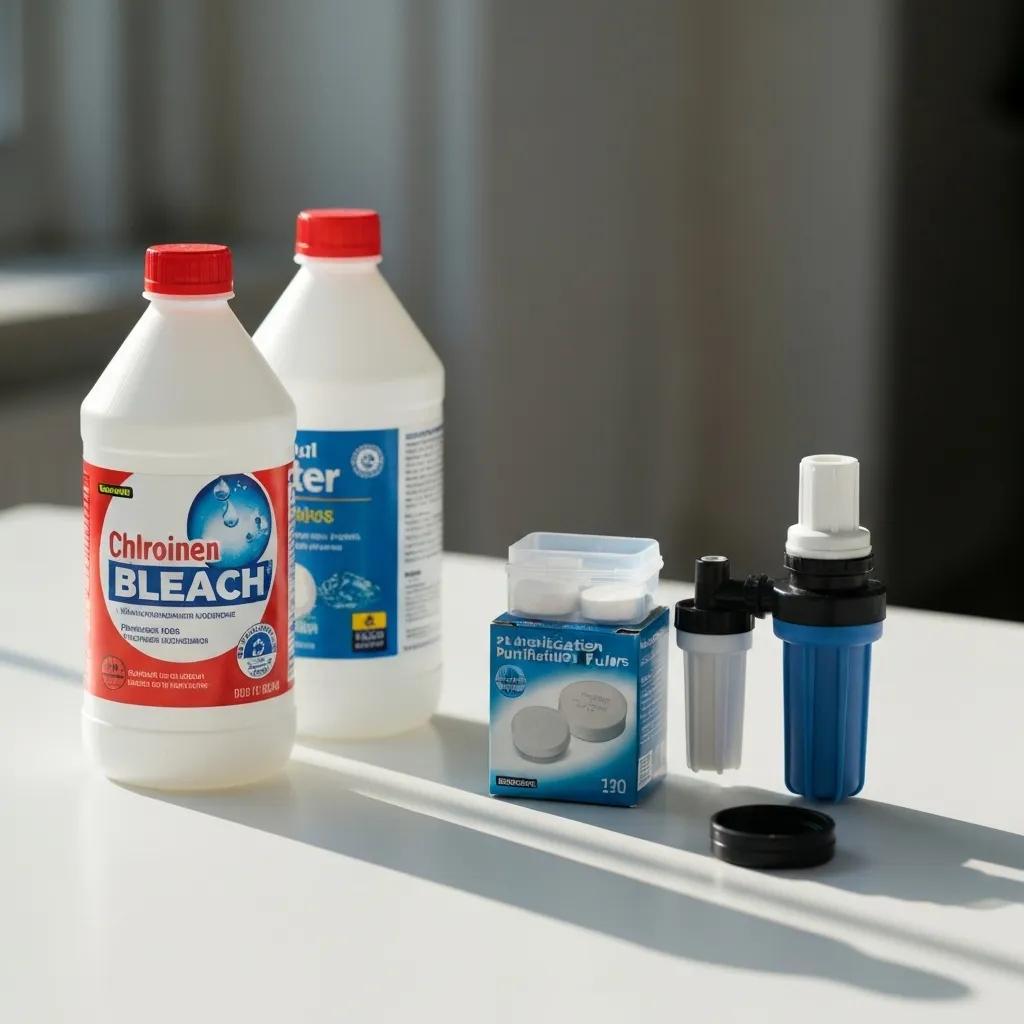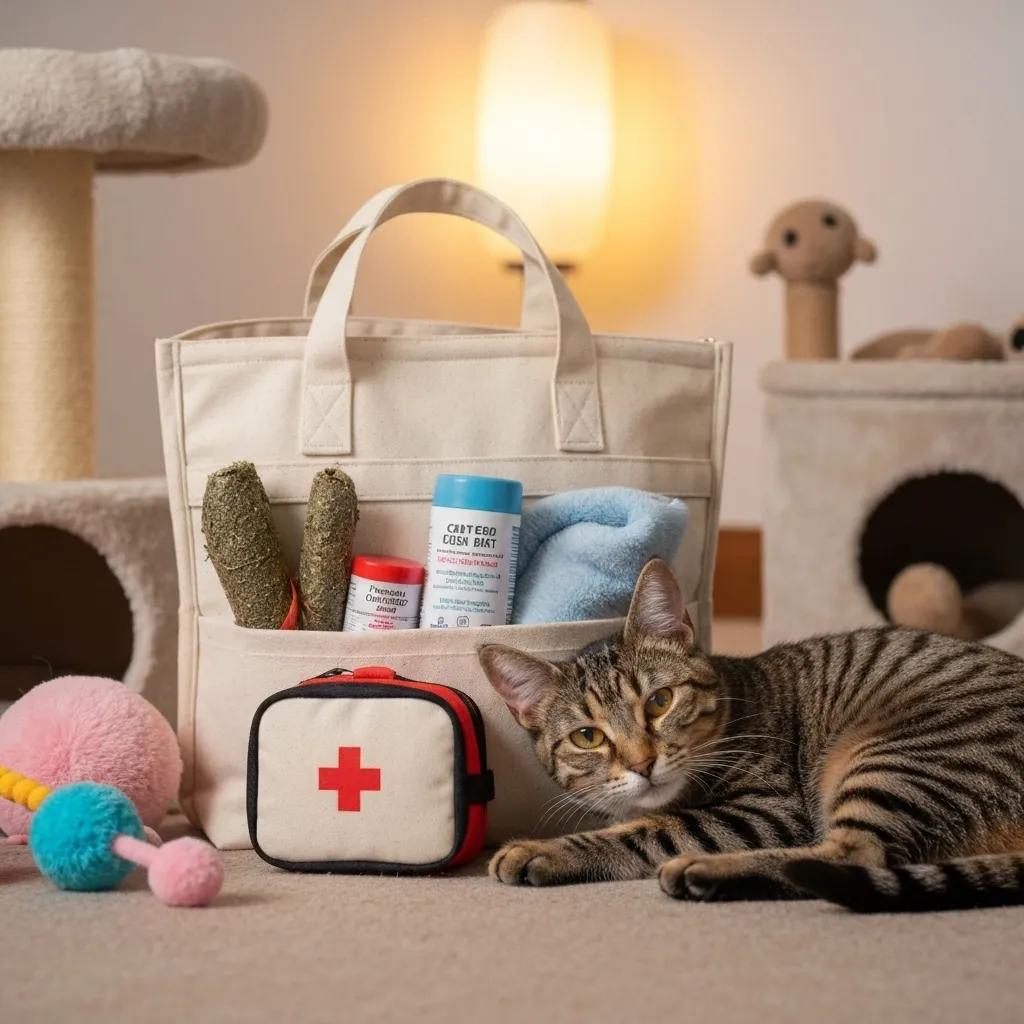Preparing for a hurricane means committing to a concrete plan that covers the vital first 72 hours when help may be delayed. This guide delivers a step-by-step hurricane survival checklist that ensures your family has clean water, sustaining food, medical essentials, reliable communication, protected documents, pet care, and home security. You will learn exact water requirements, non-perishable food options, first aid and medication protocols, communication strategies, document safeguarding, pet evacuation planning, and home protection measures—all optimized for rapid implementation. By following this checklist, you'll transform uncertainty into confident action and ensure resilience from day one through day three of a hurricane emergency.
TL;DR - Complete Hurricane Survival Checklist
Basics
- Non-Perishable Food (3+ day supply)
- Water (1–2 gallons/day/person)
- Personal Water Filter Straw
- Flashlights (1/person)
- Lighter / Waterproof Matches
- Extra Batteries
- NOAA Weatherband Radio
- Portable Solar Power Bank
- Rope/Paracord
- Cash (Small Bills)
- Help Flag
- Life Preserver & Floatation Devices
Special Items
Infant Items
- Formula
- Diapers
- Bottles
- Powdered Milk
Medications
- 2 Weeks Minimum of Prescribed Medicine
- Prescription and Non-Prescription
- First Aid Kit
- Mask (for contaminated air)
- Medical Documents
Pet Items
- Food & Water
- Leash
- Medications
Extras
- Sanitation and Personal Hygiene Items
- Moist Towelettes/Disinfecting Wipes
- Garbage Bags
- Feminine Supplies
- Soap
- Hand Sanitizer
- Toothbrush and Toothpaste
- Entertainment (cards, games, toys)
- Sun Protection
- Sunscreen
- Hats
- Can Opener
Energy/Solar
- Cell Phone Chargers
- Backup Power Bank
Copies of Important Documents
- Insurance Policies
- ID/Passport
- Social Security Card
- Birth Certificate
- Bank Account Records
Evacuation Plan
- Laminated Phone Numbers
- Routes to Nearest Shelters
- Where to Take Your Pets
Other Tools & Supplies
- Multi-Tool Knife
- Cooking Utensils
- Tube Tent
- Scream Whistle
- Mylar Blankets or Bivy
- Survival Hatchet (with pry bar)
- Dry Bags to Secure Valuables
Clothing
- One Change/Person
- Shoes/Boots
- Work Gloves
- Rain Gear
- Emergency Ponchos
- Jackets for Warmth
- Hats
- Umbrellas
- Rain Boots
Vehicles
- Keep Tanks Filled with Gasoline
What Are the Essential Water Requirements for a 72-Hour Hurricane Survival Kit?
Water is the foundational resource for hydration and basic sanitation during the critical 72-hour window following a hurricane. FEMA recommends a minimum of one gallon per person per day to maintain bodily functions and hygiene when utilities fail. Having the right volume and purification methods in place prevents dehydration, waterborne illness, and supports wound cleaning in the first three days.
Water Requirements for Hurricane Preparedness
FEMA recommends storing a minimum of one gallon of water per person per day for essential hydration and sanitation during a hurricane, when municipal water supplies may be compromised. This guideline ensures basic needs are met for the initial 72-hour period following a storm.
Federal Emergency Management Agency (FEMA), "Ready.gov"
This recommendation directly supports the article's emphasis on the importance of water in a 72-hour hurricane survival kit.
How Much Water Should You Store Per Person for 72 Hours?
You should store at least one gallon of drinking water per person per day for 72 hours because adequate hydration maintains cardiovascular stability and prevents heat-related conditions when utilities fail.
- 1 gallon per person per day × 3 days = 3 gallons per person
- Include additional water for pet hydration and basic sanitation
- Rotate stored water every six months to ensure freshness
Ensuring this baseline supply secures both drinking and minimal cleaning needs before exploring purification tactics and containers.
What Are Effective Water Purification Methods During a Hurricane?

Water purification removes pathogens and contaminants when stored or collected water may not meet safety standards. Effective methods include:
- Bleach Treatment: Add 8 drops of unscented household bleach per gallon, stir, wait 30 minutes, then use.
- Purification Tablets: Follow tablet instructions (usually one tablet per liter) and wait the recommended contact time.
- Portable Filtration Pump: Pump through a 0.2-micron filter to remove bacteria and protozoa.
These techniques ensure that backup water sources such as rainwater or questionable tap water become safe, maintaining hydration and preventing gastrointestinal distress.
Purification Method Comparison
| Method | Mechanism | Best Use Case |
|---|---|---|
| Liquid Bleach | Chlorine oxidation of microbes | Large-volume treatment of stored water |
| Sodium Dichloroisocyanurate Tablets | Slow-release chlorine for microbial kill | Lightweight kits for hiking or travel |
| Portable Microfilter | Physical filtration of bacteria/protozoa | On-the-spot filtration of streams or faucets |
Selecting the right purification method for your context guarantees safe drinking water, setting the stage for reliable storage solutions.
Which Water Storage Solutions Are Best for Emergency Preparedness?
Choosing durable, BPA-free, sealable containers prevents leaks, contamination, and spoilage during a hurricane's aftermath. Consider:
| Container Type | Capacity | Key Characteristics | Recommended Use |
|---|---|---|---|
| 5-gallon jerry can | 5 gallons | Stackable, spigot-ready | Primary family water supply |
| 1-gallon plastic jug | 1 gallon | Handle and pour spout | Individual daily ration |
| Collapsible bladder | 3–6 gallons | Lightweight, packable | Portable backup for evacuation |
| Food-grade buckets | 2–7 gallons | Screw-top lid, puncture-resistant | Bulk storage with filtering attachment |
High-quality containers preserve water integrity under storm conditions and transition smoothly into purification steps if local water quality declines.
What Non-Perishable Food Items Should You Include in a 72-Hour Hurricane Survival Kit?
Non-perishable foods provide sustained energy without refrigeration or cooking, ensuring nutrition when power and heat are unreliable. These shelf-stable items prevent hunger, maintain blood sugar, and support immune function during the first three days of isolation.
Non-Perishable Food for Emergency Situations
Non-perishable foods are crucial for maintaining energy and nutrition when power and cooking facilities are unavailable during a hurricane. These foods should have a long shelf life and provide a balance of macronutrients to support overall health and well-being.
American Red Cross, "Disaster Preparedness Guide" (2024)
This citation reinforces the article's advice on selecting and storing non-perishable food items for hurricane preparedness.
Which Types of Non-Perishable Foods Are Ideal for Hurricanes?
| Food Type | Nutritional Benefit | Shelf Life |
|---|---|---|
| Canned Lean Protein | 15–20 g protein per can, iron source | 2–5 years |
| Energy Bars | 200–250 calories, fiber, B-vitamins | 1–2 years |
| Dried Fruit & Nuts | Healthy fats, potassium, antioxidants | 6 months to 1 year |
| Ready-to-Eat Cereals | Carbohydrates, fortified vitamins | 6–12 months |
Incorporating varied macronutrients maintains energy levels and supports overall well-being until normal meal preparation resumes.
How Can You Prepare Food Without Electricity During a Storm?
When the power goes out, manual tools and no-cook meals become essential for sustenance. Gather:
- A manual can opener for canned goods
- A portable gas or camping stove with fuel canisters for hot meals
- Ready-to-eat options like peanut butter, shelf-stable milk, and tuna packets
Using these methods ensures you can serve meals safely without relying on grid electricity and reduces stress when conditions update.
What Special Dietary Needs Should Be Considered in Your Food Supplies?
Emergency plans must account for allergies, infants, and medical diets to prevent adverse reactions and nutritional gaps:
- Gluten-free or lactose-free canned soups for digestive sensitivities
- Infant formula and baby food pouches with a three-day supply
- Low-sodium canned vegetables for hypertension management
Anticipating these needs keeps all household members nourished and safe when access to specialized foods is limited.
How Do You Prepare a Comprehensive First Aid and Medication Kit for 72 Hours?
A well-equipped first aid kit addresses injuries, chronic conditions, and infection control when medical facilities may be overwhelmed or inaccessible. Immediate treatment reduces complications, supports wound healing, and manages existing health issues until evacuation or professional care arrives.
What Are the Must-Have Items in a Basic First Aid Kit?
A complete first aid kit contains components for wound care, pain relief, and minor emergency interventions:
- Adhesive bandages in varied sizes for cuts and blisters
- Sterile gauze pads and medical tape for moderate wounds
- Antiseptic wipes and antibiotic ointment to prevent infection
- Over-the-counter pain relievers (ibuprofen, acetaminophen)
- Tweezers, scissors, and disposable gloves for safe handling
Each item plays a critical role in stabilizing injuries, preventing infection, and maintaining comfort until full medical treatment is available.
First Aid Kit Contents
| Item | Purpose | Recommended Quantity |
|---|---|---|
| Adhesive Bandages | Protection of small wounds | 20 pieces |
| Sterile Gauze Pads | Dressing larger cuts and abrasions | 10 pads |
| Antiseptic Wipes | Cleansing wound sites | 20 wipes |
| Medical Tape | Securing dressings | 1 roll |
| Pain Relievers | Alleviating pain and fever | 20 tablets |
Stocking these essentials ensures you can respond immediately to minor to moderate injuries without delay.
How Should Prescription and Refrigerated Medications Be Stored During Power Outages?
Maintaining the efficacy of prescription medicines, especially insulin and other temperature-sensitive drugs, requires insulated storage and cool packs:
- Place medications in a waterproof container with freezer gel packs
- Store in a cooler kept in the coolest part of your home or insulated bag
- Replenish ice packs every 12 hours to keep temperatures between 36–46 °F (2–8 °C)
This approach preserves medication potency and prevents health crises related to temperature degradation.
Which Hygiene and Sanitation Supplies Are Essential for Short-Term Survival?
Hygiene products prevent disease transmission and maintain morale when facilities are limited:
- Hand sanitizer with at least 60% alcohol for effective germ control
- Moist towelettes for personal cleaning without running water
- Disposable garbage bags and ties for waste disposal
- Extra toilet paper and feminine hygiene items
Ensuring sanitation readiness supports overall health and comfort throughout the initial hurricane aftermath.
How Can You Maintain Communication and Stay Informed During a Hurricane?
Reliable communication devices and a clear plan keep you connected to family, emergency services, and weather updates when cell towers or internet services are disrupted. Staying informed reduces panic, guides evacuation, and coordinates post-storm assistance.
What Emergency Communication Devices Are Recommended?
- NOAA weather radio to receive official storm watches and warnings
- Battery-powered or hand-crank AM/FM radio for general updates
- Portable power banks and solar chargers for cell phones and handheld radios
These tools guarantee access to life-saving information and family check-in capabilities even during prolonged outages.
How Do You Create an Effective Family Communication Plan?
- Designate an out-of-state contact who can relay messages
- Establish two meeting points: one local and one outside the immediate area
- Share contact numbers and plan details via text, email, and printed lists
A clear communication framework minimizes confusion, speeds reunification, and supports collective safety decisions.
How Can NOAA Weather Radios and Alerts Help You Stay Updated?
NOAA weather radios broadcast continuous, authoritative weather forecasts, warnings, and hazard information:
- Automatic alarm tone for life-threatening weather notices
- Battery backup retains programming during power loss
- S.A.M.E. technology allows you to configure alerts for specific counties
Access to these alerts empowers you to take timely shelter or evacuation actions, maintaining safety through every storm phase.
What Important Documents and Valuables Should You Secure for Hurricane Preparedness?
Protecting vital records and valuables prevents permanent loss and streamlines recovery after a disaster. Securing documents today avoids lengthy delays in insurance claims, medical treatment, and financial transactions when systems are down.
Which Documents Should Be Stored in Waterproof Containers?
Store originals and copies of critical records in sealable, water-resistant containers:
- Personal identification (driver's licenses, passports, Social Security cards)
- Property deeds, insurance policies, and mortgage documents
- Medical records, vaccination certificates, and prescription information
Keeping these documents protected ensures access to essential services and expedites recovery processes.
How Much Cash Should You Keep for Emergency Financial Preparedness?
ATMs and credit card networks may be offline after a hurricane, so maintain a modest cash reserve:
- $200–$300 in small bills for food, fuel, and emergency supplies
- Secure cash in a waterproof pouch or sealed envelope
- Rotate bills periodically to ensure bills remain unmarked and usable
Having immediate cash on hand removes financial barriers during critical first-response hours.
How Do You Prepare Pets for a Hurricane Emergency?
Including pets in your disaster plan safeguards animal welfare and prevents last-minute scrambling. A focused pet emergency kit and clear evacuation plan keep your companions calm and cared for throughout potential displacement.
What Should a Pet Emergency Kit Contain for 72 Hours?

| Kit Component | Purpose | Recommended Quantity |
|---|---|---|
| Shelf-stable pet food | Sustained nutrition | 3-day supply |
| Bottled water | Hydration | 1 gallon per pet per day |
| Medications & records | Health maintenance | 7-day supply & vet info |
| Sturdy pet carrier | Safe transport | 1 per animal |
| Leash, collar, ID tag | Control and identification | 1 set each |
Preparing a complete kit ensures pets remain secure and nourished when routines are disrupted.
How Do You Develop a Pet Evacuation Plan and Find Pet-Friendly Shelters?
A proactive evacuation strategy keeps your pet safe and accepted at shelters:
- Research local pet-friendly shelters and hotels before storm season
- Confirm vaccination and microchip information for entry requirements
- Pack a familiar blanket or toy to reduce animal anxiety
By planning routes, accommodations, and documentation ahead of time, you avoid last-minute obstacles and ensure a seamless evacuation.
How Do You Secure Your Home and Plan for Evacuation During a Hurricane?
Structural protection and a clear exit strategy reduce damage and risk when high winds, storm surge, or flooding threaten your property. Implementing these measures ahead of landfall preserves safety and minimizes recovery time.
What Are the Best Practices for Securing Windows, Doors, and Outdoor Items?
Reinforcing building openings and removing hazards prevents debris-driven damage:
- Install storm shutters or plywood over windows and glass doors
- Secure exterior doors with hurricane-rated bolts or braces
- Bring outdoor furniture, grills, and potted plants inside or tie them down
Completing these steps transforms vulnerable entry points into defensible barriers against wind and water.
How Do You Understand and Follow Evacuation Orders and Routes?
Recognizing official directives and planning escape routes early protects lives:
- Monitor local emergency management announcements via NOAA or radio
- Map primary and secondary evacuation corridors before a storm warning
- Identify fuel stops and safe rest areas along the route
Adhering to mandatory evacuation zones and tested routes ensures swift, organized departure under pressure.
What Should You Know About Utility Management Before a Hurricane?
Properly shutting off utilities prevents secondary hazards such as gas leaks or electrical fires:
- Turn off the main water valve to avoid backflow and contamination
- Shut off the gas supply at the meter unless advised otherwise by authorities
- Unplug electrical appliances and switch off circuit breakers to prevent surges
Managing utilities methodically reduces post-storm risks and eases the return process once conditions stabilize.
Staying prepared for a hurricane's first 72 hours transforms uncertainty into confidence and action. By assembling water, food, first aid, communication tools, secure documents, pet supplies, and home-protection measures, you build a resilient framework for you and your loved ones. Establishing clear plans and quality supplies today ensures that when a storm approaches, you respond efficiently, safely, and effectively. Embrace this checklist as your foundation for readiness, and empower your family to face any hurricane with calm certainty.


